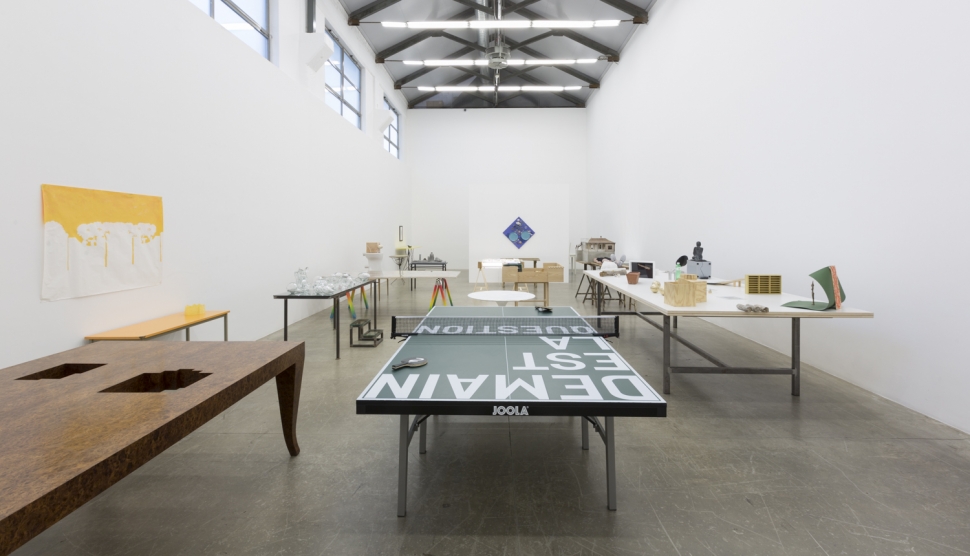On Curated Shows in Commercial Galleries
 The Pagad, 2016, installation view, Massimo De Carlo, Milan
The Pagad, 2016, installation view, Massimo De Carlo, Milan
It’s January 2016. I’m at Massimo De Carlo’s, in Milan. THE PAGAD strokes me with a sense of completeness, perfection and solidity. Probably one of the most interesting show I have seen in my city so far, with brilliantly selected works from the gallery’s archive.
An expanse assemblage of artists’ tables drives the way of a brilliantly staged exhibition, thematically and conceptually centred within the field of constructions that fall outside their utilitarian nature.
The universe constructed by Rita Selvaggio – the curator – reflects on the essence of the art-object, exploring the detachment of the functional element from the most basic, traditional domestic structure: the table.
I am writing these lines having the image of that Rirkrit Tiravanija locked in my mind, a work connecting the act of dialoguing to a basic representation of a sort of conversational sport as table tennis may be, structured through a tit-for-tat schema.
In my mind it is so clear, so natural: the curator worked with omni-comprehensive intellect to produce a language of semi-objects, refusing the idea of easy, safe zone proper to most of gallery shows happening around the globe.
The gallery functioned as archive, as a collection, in its purest aim to present works from represented artists in an anthological way. And that led me to reconfigure my opinion toward curated interventions into commercial galleries.